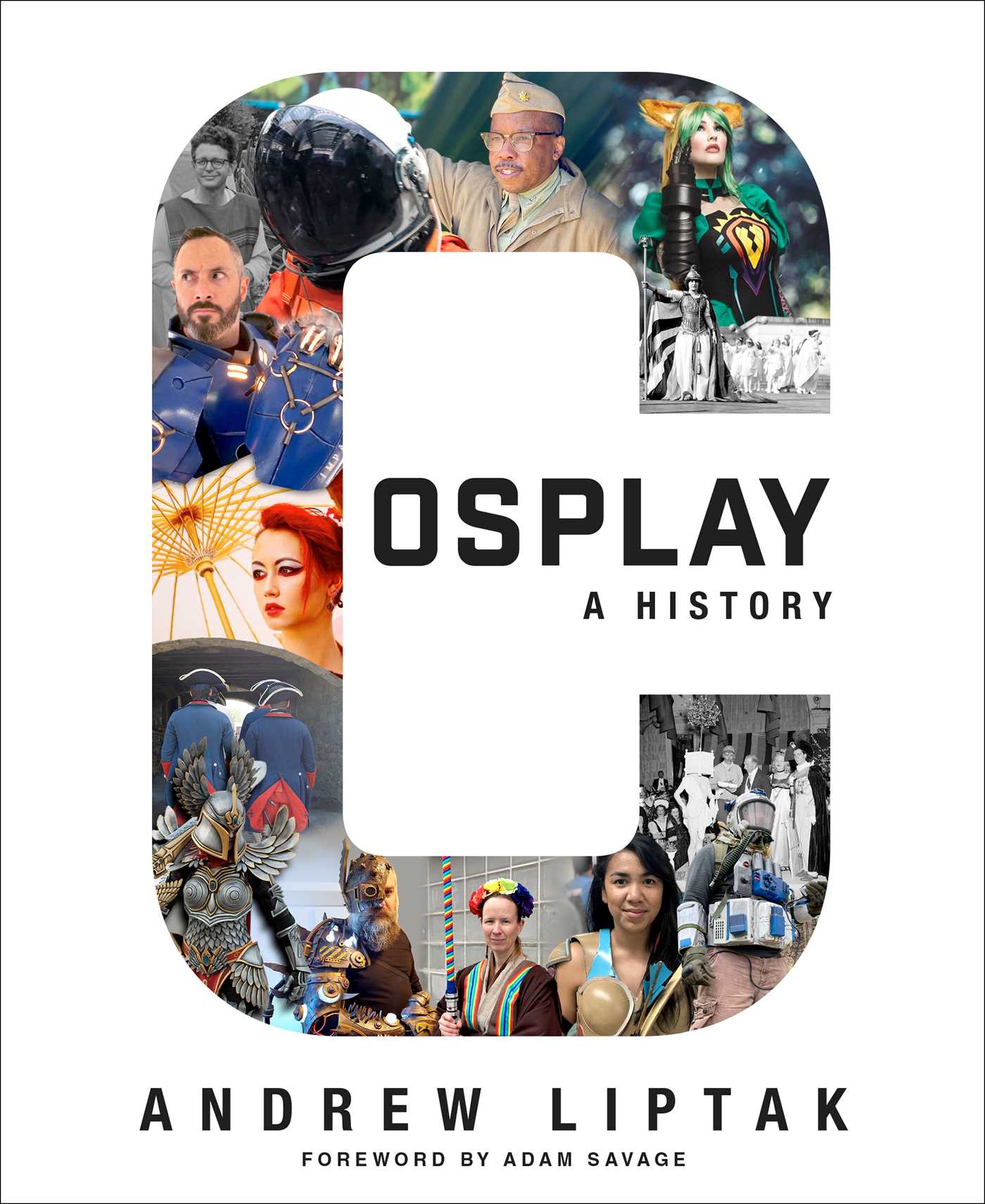From dressing up for Halloween, to donning appropriate period attire for the local Renaissance Festival, to gearing up for genre-focused conventions, playing with perception through costuming has been a fun activity for our family for many years. What started out as little kids dressing up as pirates versus knights for mock battles on the living room sofa grew to highlights such as my daughter traveling thousands of miles to present herself as her favorite character – Matt Fraction’s comic book iteration of Marvel’s Hawkeye – to the creator himself, who gave her an enthusiastic thumbs up.
So I was delighted to pick up a copy of Andrew Liptak’s new book, Cosplay: A History, to add into our familial fascination with cosplay (literally, “costume play”). I had read some of Liptak’s articles on Tor.com, along with his participation with the 501st Legion (“Vader’s Fist”, a legendary Star Wars cosplay unit that has actually become part of Star Wars canon) and was looking forward to delving deeper into the world of cosplay, beyond the SyFy’s Heroes of Cosplay and YaYa Han’s Instagram page.
Cosplay: A History is definitely a hefty, beautifully rendered book. It covers a lot of ground, from the introduction of fandoms to costume production – even a section on legal ramifications of hardcore cosplay. Be warned, however – no matter how well-meaning Liptak is, this is not as much a scholarly tome as it is a love letter of an ardent hobbyist to the subject of his devout attention. Had he called it “Cosplay: A Personal Journey”, it would have been no less appealing and far more honest.
While Lippert does indeed touch on many historical aspects of cosplay, and nods to what we think of cosplay in many different aspects – such as historical reenactments and Renaissance Faire flair – his focus is very Euro-centric, heavy on the Star Wars and Star Trek fandoms (VERY heavy on the Star Wars angle, understandably), and barely acknowledges the wealth of Asian and anime fandoms and their respective, lush cosplays (and even less on their history).
He also sidesteps what – in my experience – is the most compelling reason for everyday people to revel in cosplay: the ability to be whoever you want to be, regardless of who you are. He only spends 20 pages on “Identity” in organized cosplay (as opposed to whole sections on Production and Technology), which covers everything from black cosplayers, gender cosplay and sexism at events, but only glances over the dichotomy of “sex sells” – inherent in almost every fandom, especially those rising from comic book ranks – against consent, and gives the barest of mentions to the incredible sense of body positivity that many people find in dressing up as their favorite characters, even if they don’t have the voluptuousness of Wonder Woman or the physique of Captain America. To me, this is a very limited viewpoint, which works fine in a personal perspective, but not in one touted as even a modicum of scholarship.
That aside, if you look at this book as a sharing of a personal view, then the book is engaging and incredibly satisfying, especially if you belong to one of the most exampled fandoms: Star Trek, Halo, and to a huge – huge! – degree, Star Wars. I truly enjoyed reading about Liptak’s journey from fan to hardcore player, and his wealth of knowledge around building Stormtrooper costumes, the challenges and expectations, and his joy in being part of the 501st Legion organization. I appreciated the passion that came through in his words, and how much he cares about the craft and the greater cosplay community. Does some of it fly over my head? Sure. I’m not really interested in recreating an absolutely, down-to-the-shine authenticity of a Stormtrooper costume (heck, I’ll even admit I’m not interested in Stormtroopers!), but I still enjoyed seeing how meticulously folks will focus in order to establish that absolute authenticity, even in the moving target that is the definitive Stormtrooper look. I have such a greater understanding of, and appreciation for, those dedicated individuals, and the process.
If I look at this book as that personal view, I can fully respect and promote it. Posturing it as a history, I am less comfortable, for it seems that what is totally legitimate and genuine to me and mine (and our friends and our greater cosplay community) is marginalized and therefore of lesser value. While I understand this was not the author’s intent, it still played out for me, quite strongly. So yes, if you are into cosplay, or enjoy reading about manifestations of Western pop culture fandoms, if you love going go conventions, if you dream of stepping into the boots of your favorite superheroes (or supervillains!), browse through this book and enjoy all the richness it has to offer. Then go out and be the fabulous character you long to be, whether you have the fortitude, time and resources to “do it right” or just have the joy and desire to simply do it, regardless.
~ Sharon Browning



